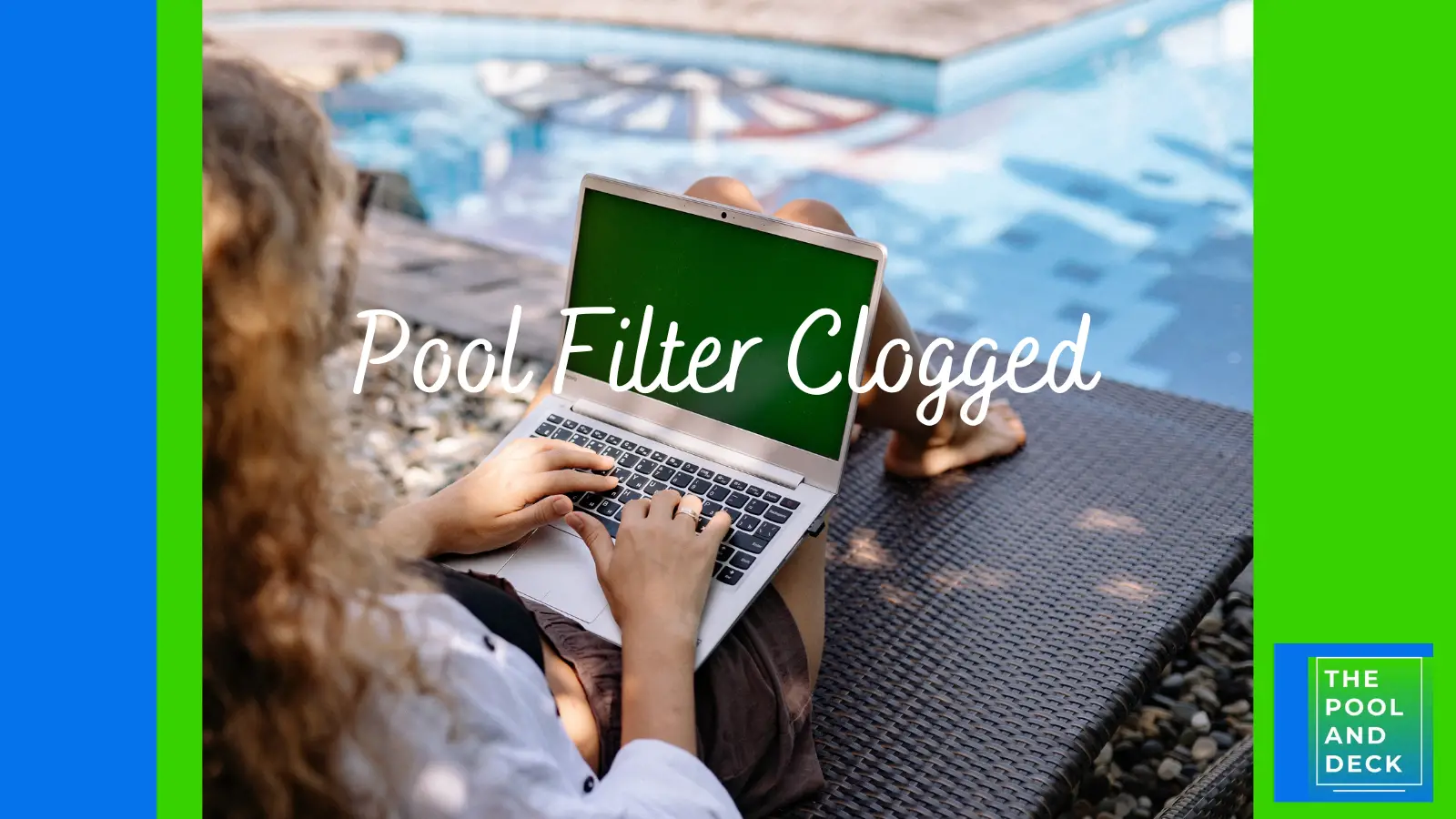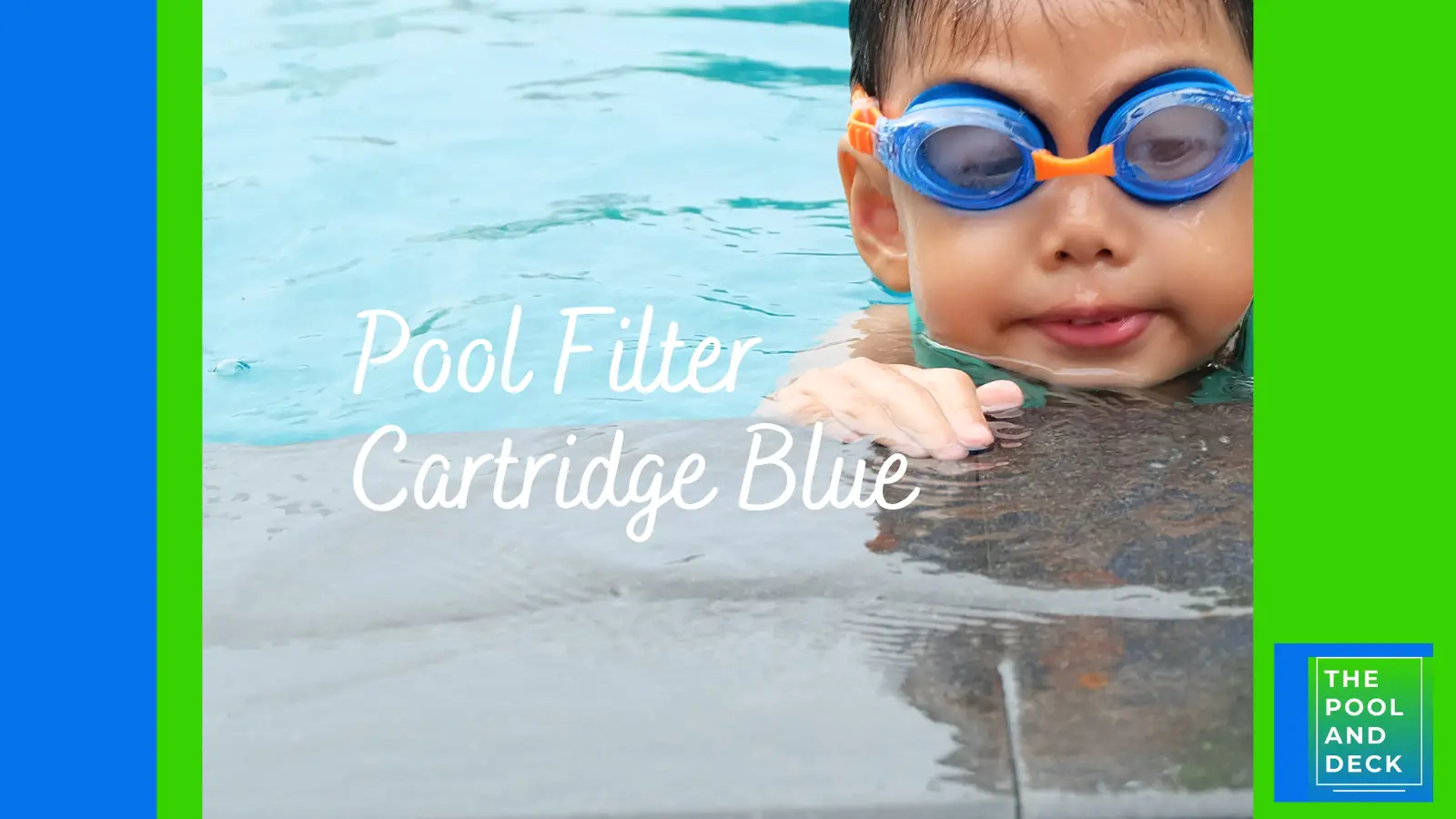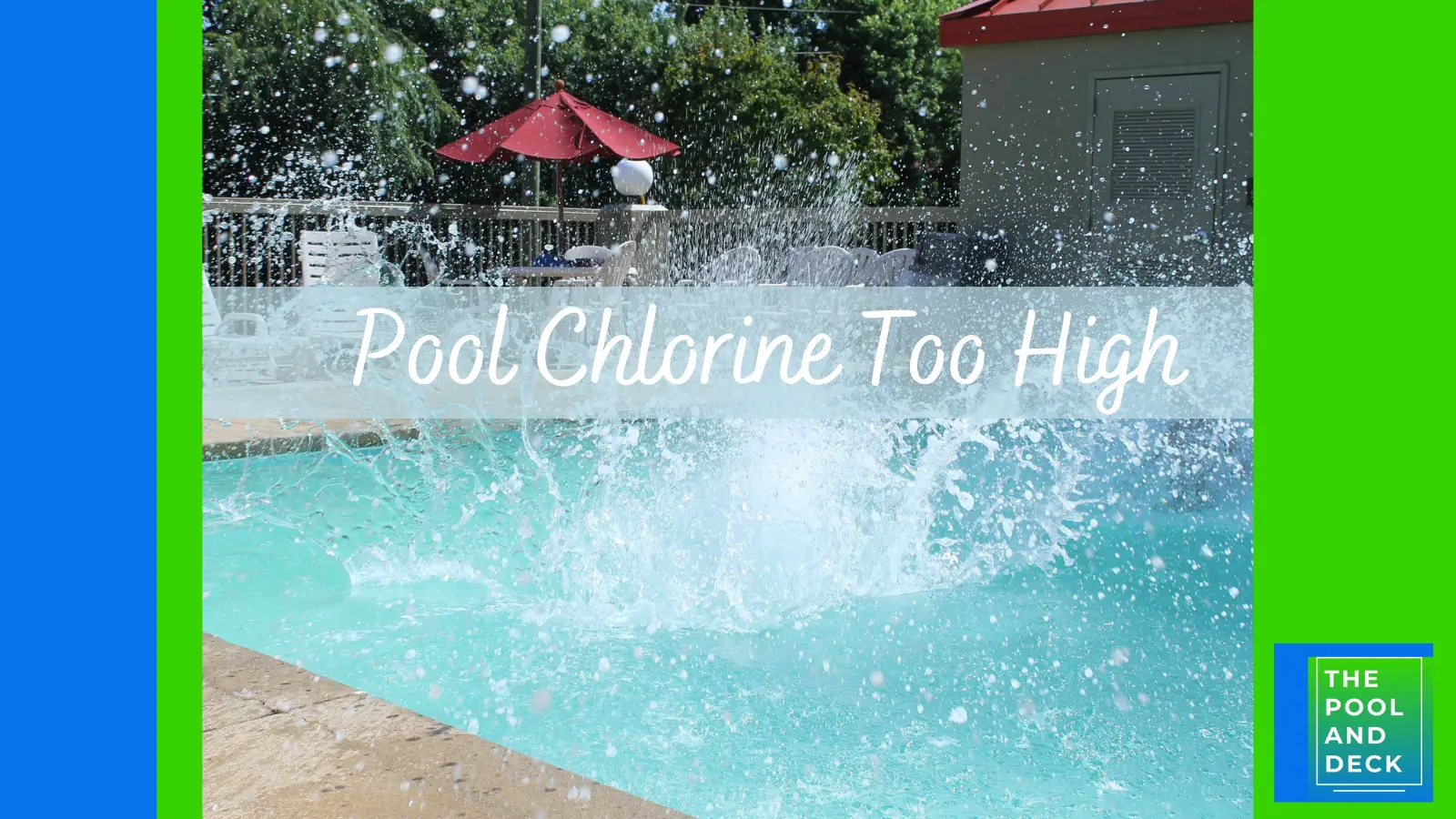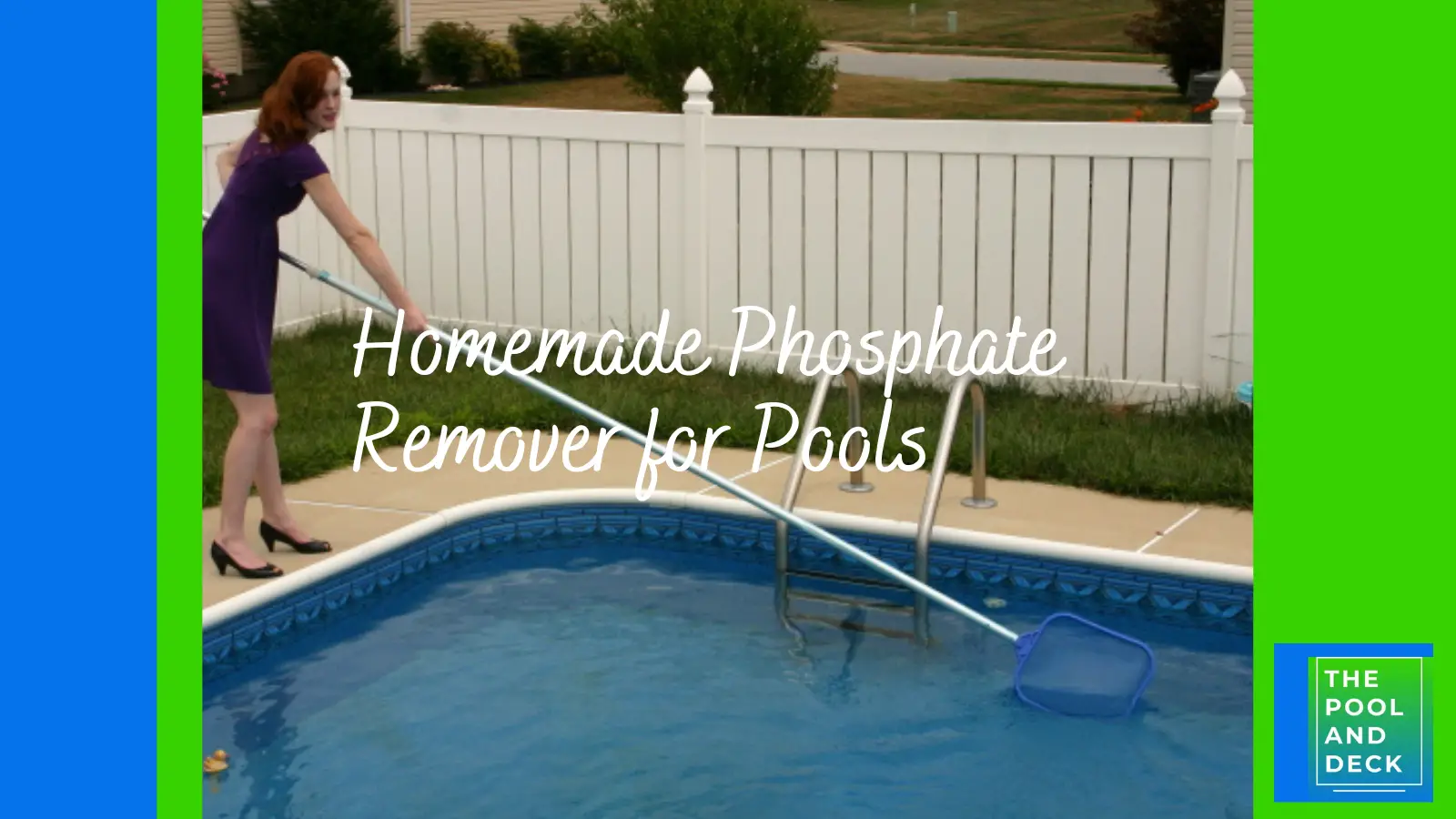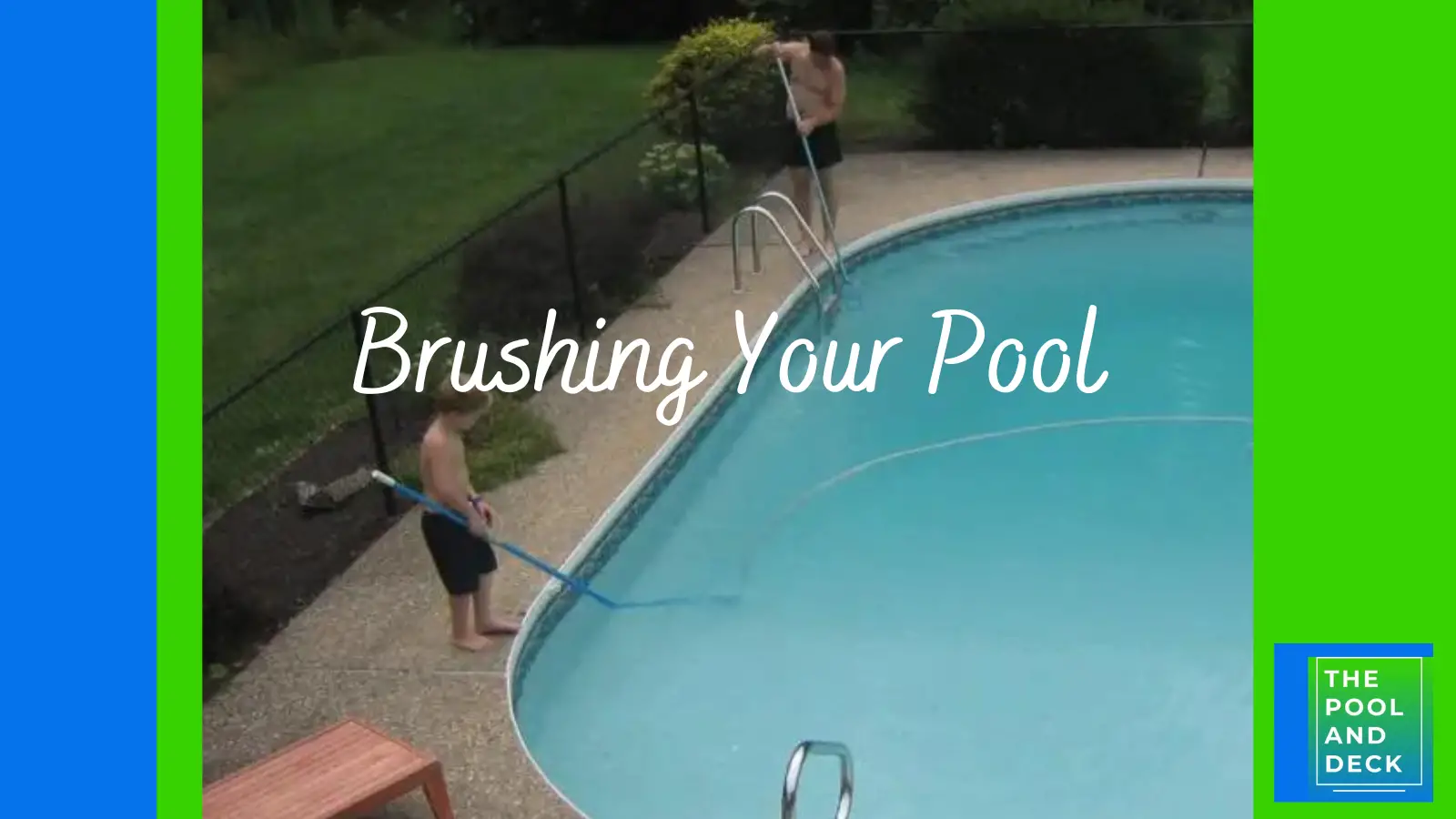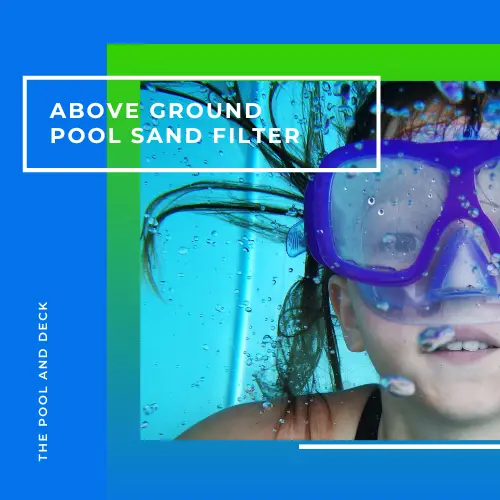Cyanuric Acid in a Saltwater Pool: A Comprehensive Guide
As an Amazon Associate, I earn from qualifying purchases.
Owning a saltwater pool is a fantastic way to enjoy crystal-clear water with less maintenance than traditional chlorine pools. However, you still need Cyanuric Acid in a Saltwater Pool.

Why? Saltwater pools are no different from traditional chlorine pools, as both use chlorine as the sanitizer. The chlorine source may differ, but at the end of the day, it is still Free Chlorine (FC) killing germs, bacteria, and algae.
Cyanuric Acid protects the Free chlorine from the sun’s UV rays. Without a chlorine stabilizer, the sun’s UV rays will deplete the Free Chlorine (FC) by 90% in just 2 hours.
You must add Cyanuric Acid (CYA) to your saltwater pool as the chlorine from the Electrolytic Chlorine Generator (ECG) is not stabilized.
In this article, I will explain the need for cyanuric acid in a saltwater pool, how to test and maintain its levels, and tips for safely handling and adjusting it.
Key Takeaways
- Cyanuric acid protects chlorine from UV rays, ensuring effective sanitization.
- Maintain CYA levels between 60–80 ppm in a saltwater pool.
- Test regularly to avoid low or excessive CYA levels in your saltwater pool.
- Add granular or liquid stabilizer correctly to raise cyanuric acid levels.
- Lower high CYA levels by draining/refilling or using a CYA reducer.
- Separate salt and CYA additions to prevent chemical imbalance.
- Use safety gear and follow proper handling procedures for pool chemicals.
Table of Contents
Why is Cyanuric Acid Essential for Saltwater Pools?
Cyanuric acid (CYA) is a chemical compound that acts as a chlorine stabilizer in swimming pools. It protects the free chlorine in the pool from being broken down by the sun’s UV rays.
Without the right amount of CYA, your saltwater pool will lose chlorine too quickly. Free Chlorine may drop below the minimum recommended level for sanitization.
In a saltwater pool, chlorine is generated through electrolysis in the salt cell. Free chlorine kills bacteria, algae, and other harmful contaminants, just like in a traditional pool.
However, direct exposure to sunlight can degrade up to 90% of the chlorine in just a couple of hours. Adding cyanuric acid forms a protective bond with chlorine, slowing down its breakdown and ensuring it remains effective for longer.
Outdoor pools are exposed to sunlight throughout the day. If not for the protection from Cyanuric acid the electrolytic chlorine generator of a saltwater pool will have to work extra hard to maintain Free Chlorine levels.
In short, cyanuric acid is essential for maintaining balanced pool water chemistry, reducing unnecessary strain on the chlorine system, and extending the lifespan of salt cells.
How Does Cyanuric Acid Protect Free Chlorine?
UV rays from the sun cause free chlorine to break down into less effective forms, such as combined chlorine (chloramines), through a process known as photolysis.
This transformation reduces the disinfectant properties of chlorine, making it less effective at killing bacteria and algae in pool water.
The addition of cyanuric acid (CYA), a stabilizer, can significantly slow down the degradation of chlorine by forming a protective barrier around it.
It acts like “sunscreen” for chlorine, extending its effectiveness by up to three to five times longer than unstabilized chlorine.
When chlorine is added to pool water, it primarily exists in the form of hypochlorous acid (HOCl) and hypochlorite ions (OCl). CYA can form a weak bond with chlorine through a nitrogen-chlorine bond.
The weak bond between CYA and chlorine effectively shields the chlorine molecules from UV radiation.
However, the bond between CYA and chlorine is not permanent; it allows for the release of chlorine when it encounters pathogens or organic matter that needs to be oxidized.
In essence, while CYA protects chlorine from UV degradation, it does not inhibit its disinfecting ability.
However, too much CYA can hinder chlorine’s effectiveness, making it less efficient at killing bacteria and other harmful organisms.
Dosage of Cyanuric Acid in a Saltwater Pool
Guess what? Not only do you need Cyanuric Acid in a saltwater pool, you need more that that in a traditional chlorine pool.
Hayward is a well known manufacturer of salt water pool Electrolytic Chlorine Generator (ECG). Below is a snapshot from their Aqua Rite Owner’s Manual.
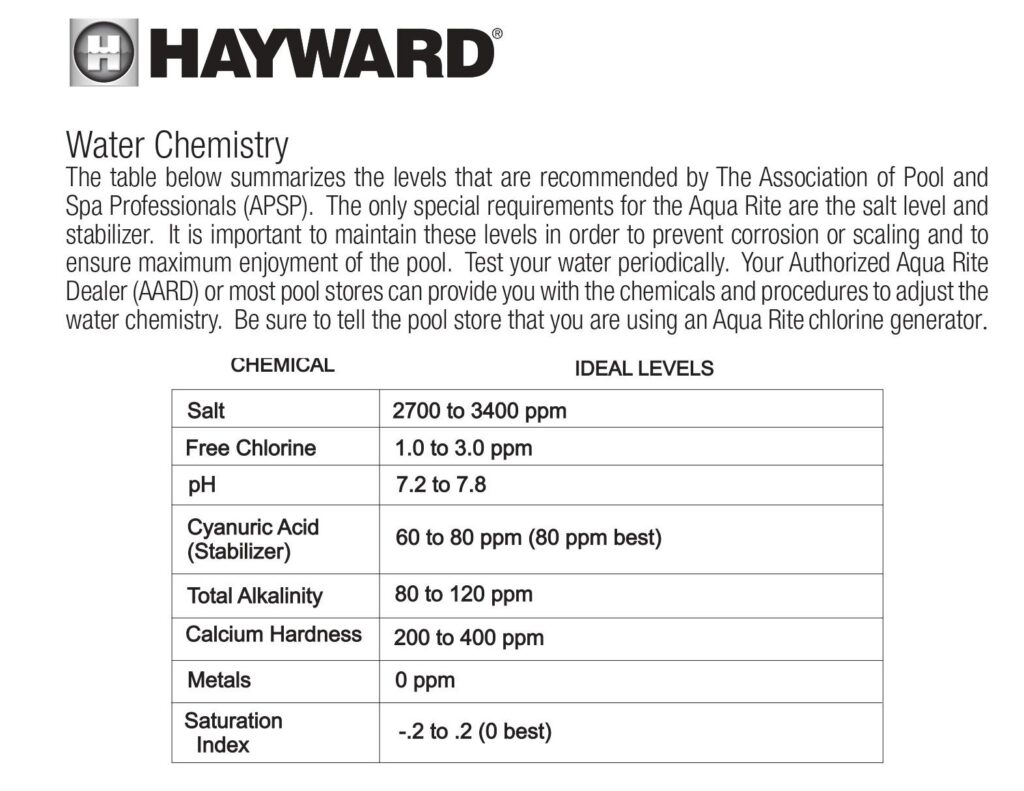
A Helpful Chart

Go for an even higher range of 80-100 ppm, if your pool sees a lot more than normal sunlight.
Why Do You Need More?
In salt water pools, chlorine is not added directly to the pool. Instead salt is added to the pool water. Salt and water form Sodium Hypochlorite (NaOCl). Sodium Hypochlorite will undergo photolysis when subjected to UV rays from the sun.
Both, Sodium Hypochlorite (Liquid Chlorine) and Calcium Hypochlorite (Cal-Hypo) are un-stabilized forms of chlorine and deplete very fast under UV radiation.
You need Cyanuric Acid (CYA) to protect the salt in the pool water from the UV radiation. This is in addition to the Cyanuric Acid (CYA) required to protect the chlorine produced from the Sodium Hypochlorite using the Electrolytic Chlorine Generator (ECG).
Because of the double requirement, the Cyanuric Acid (CYA) level in a outdoor saltwater pool must be maintained at 60-80 ppm instead of the 30-50 ppm for regular chlorine outdoor pools.
For an indoor salt water pool, maintain the Cyanuric Acid (CYA) level at 20-40 ppm instead of 10-20 ppm for regular chlorine indoor pools.
Testing and Maintaining Cyanuric Acid Levels
Maintaining recommended cyanuric acid (CYA) levels in your saltwater pool will ensure optimal chlorine effectiveness. Regular testing is the first step.
How to Test Cyanuric Acid in a Saltwater Pool
- Use a Pool Test Kit or Strips:
Purchase a reliable test kit or test strips for measuring cyanuric acid levels. These are available at pool supply stores or online. - Water Sample:
Collect a water sample from about 12–18 inches below the surface to get an accurate reading. - Read the Results:
Compare the color or turbidity in the test vial to the chart provided with the kit. The ideal range for a saltwater pool is 60–80 ppm.
Recommended Chemical Test Kit
Taylor K-2005 Complete DPD 9-in-1 Test Kit
Tests for free & total chlorine, bromine, pH, total alkalinity, total hardness, and cyanuric acid (CYA) levels.
How to Maintain Cyanuric Acid Levels
- If Levels Are Too Low: Add cyanuric acid stabilizers. Be careful not to overdose.
- If Levels Are Too High: Perform a partial drain and refill with fresh water to dilute the excess CYA. Alternatively, use a bioactive cyanuric acid reducer for gradual adjustment.
When to Test for Cyanuric Acid (CYA)
It’s best to test your cyanuric acid levels at least once a week during the summer when UV exposure is at its peak. Regular testing ensures your pool’s chlorine remains effective, and your water stays safe and balanced.
How to Add Cyanuric Acid in a Saltwater Pool
Adding cyanuric acid (CYA) in a saltwater pool is a simple process. Here is how to do it.

Step 1: Choose the Right Type of Cyanuric Acid
- Granular Stabilizer: Commonly used and cost-effective, but it needs to be dissolved before adding to the pool.
- Liquid Stabilizer: Easier to use as it dissolves instantly, making it a convenient option for quick adjustments.
Step 2: Determine How Much Cyanuric Acid You Need
- Check your pool’s volume in gallons and use the product label to calculate the right dose.
- A general guideline is to add about 1 pound of granular cyanuric acid per 10,000 gallons to increase CYA by 10 ppm.
Step 3: Dissolve Granular Cyanuric Acid (If Using)
- Fill a large bucket with warm water and slowly add the granular cyanuric acid, stirring until fully dissolved. This prevents clumping and ensures even distribution.
Step 4: Add Cyanuric Acid to Your Pool
- Pour the dissolved solution or liquid stabilizer slowly into the skimmer while the pump is running.
- Run the pump & filter on “recirculate” position to ensure even distribution throughout the pool.
- Avoid adding it directly to the pool water, as undissolved granules can damage the pool surface or equipment.
Step 5: Test and Adjust
- Wait 24–48 hours after adding the cyanuric acid, then retest CYA levels. Repeat the above process, if necessary.
How Much Cyanuric Acid Should You Add?
Determining how much cyanuric acid (CYA) to add to your saltwater pool depends on your pool’s size and current CYA levels.
Adding the right amount ensures that your pool’s chlorine stabilizer works effectively without overdoing it.
Step 1: Measure Your Pool Volume
- First, calculate your pool’s volume in gallons. For rectangular pools, use this formula:
Length × Width × Average Depth × 7.5 = Gallons - You can also use my Pool Volume Calculator. It works for rectangular, circular and oval pools.
- For irregular shapes, consult your pool manual or use another online calculator.
Step 2: Determine the Current Cyanuric Acid Level
- Test your water using a reliable kit to find out how much cyanuric acid is already present. The ideal range for a saltwater pool is 60–80 ppm.
Step 3: Use a Dosage Chart
- Most cyanuric acid products include a dosage chart on the label. For example, Dosage Chart for HTH Pool Care Stabilizer:

Recommended Chlorine Stabilizer (Cyanuric Acid)
HTH 67061 Pool Care Stabilizer
- EXTENDS CHLORINE LIFE: Helps slow down the degradation of chlorine by direct sunlight
- EASY APPLICATION: Simply add HTH Chlorine Stabilizer directly to your skimmer
Step 4: Add in Small Increments
It’s better to add cyanuric acid gradually, testing the water after each addition. This approach prevents over-correction, which can lead to high CYA levels that are harder to lower.
How to Lower Cyanuric Acid Levels
This is a bit tricky. So, you should be very careful not to get into a situation where CYA level in your saltwater pool exceeds 100 ppm.
However, if you find that Cyanuric Acid in your saltwater pool is higher than recommended, you can use one of the following two methods:
Method 1
Partial Drain and Refill: The most effective way to reduce high CYA levels is to remove a portion of the water and replace it with fresh water. This dilutes the CYA concentration.
Method 2
Use a CYA Reducer: However, if you do not want to lose swimming pool water (and the costly chemicals in it) you can use Bio-Active Cyanuric Acid Reducer.
It is a new biological and natural approach, that has been proven to reduce Cyanuric Acid (CYA) levels by disintegrating it at the molecular level.
It won’t cause adverse effects on your pool and is also non-toxic, non-polluting and completely biodegradable.
Safety Tips for Handling Cyanuric Acid
Handling cyanuric acid (CYA) requires caution, as it is a chemical that can irritate if mishandled.
Pro Tip: The clue is in the word “acid” in the product name.

1. Use Protective Gear
- Always wear gloves to protect your hands and goggles to safeguard your eyes when handling cyanuric acid.
- Wear a dust mask when working with granular stabilizer to avoid inhaling any fine particles.
2. Avoid Direct Contact with Skin and Eyes
- CYA can cause skin irritation or serious eye damage. If contact occurs, rinse immediately with plenty of water and seek medical attention if irritation persists.
3. Add Slowly and Carefully
- Avoid pouring granules directly into the water, when adding cyanuric acid to the pool.
- Undissolved particles can damage the pool surface or equipment. Instead, dissolve granules in a bucket of water first.
4. Neutralize Spills
- If you spill cyanuric acid, sprinkle baking soda on the affected area to neutralize the acid. Then, clean the spill with water.
5. Store Properly
- Keep cyanuric acid in a dry, cool, and well-ventilated area.
- Keep cyanuric acid away from children, pets, and other pool chemicals.
- Improper storage can lead to chemical reactions or accidents.
6. Read the Label
- Always follow the manufacturer’s instructions and recommended dosage.
- Overuse can result in high CYA levels, which are difficult to lower.
7. Work in a Well-Ventilated Area
When handling liquid stabilizers or preparing granules, work outdoors or in a space with good ventilation to avoid inhaling fumes.
Can You Add Salt and Cyanuric Acid at the Same Time?
A common question among pool owners is whether it’s safe and effective to add salt and cyanuric acid (CYA) to a saltwater pool at the same time.
The answer depends on your approach and how you plan to introduce these chemicals into your pool.
Can You Add Them Together?
Technically, you can add salt and cyanuric acid on the same day, but it’s best to introduce them separately to avoid potential chemical interactions and ensure proper distribution in the water.
Adding both simultaneously, especially in the same area, could lead to uneven dissolving or cloudiness in the water.
Best Practices for Adding Salt and Cyanuric Acid
- Start with Salt:
- Add the required amount of salt to your pool first. Spread it evenly across the surface while the pump is running to help it dissolve completely. Allow 24 hours for the salt to distribute throughout the pool water.
- Test Salt Levels:
- Once the salt has fully dissolved, use a saltwater test kit to ensure the salinity is within the recommended range (usually 2,700–3,400 ppm).
- Add Cyanuric Acid:
- After confirming the salt levels, add cyanuric acid. If using granular stabilizer, dissolve it in a bucket of warm water first, then pour it slowly into the skimmer. For liquid stabilizers, follow the product instructions.
Why Add Them Separately?
- Efficient Dissolving: Both salt and cyanuric acid need time and proper circulation to dissolve evenly in the pool water. Adding them together may reduce their effectiveness.
- Prevent Cloudiness: Adding too many chemicals at once can cause temporary cloudiness or imbalance in pool water chemistry.
Timing Tip
It’s ideal to wait at least 24 hours between adding salt and cyanuric acid, allowing each chemical to fully integrate before testing and making further adjustments.
Frequently Asked Questions (FAQs)
Can cyanuric acid damage my saltwater pool?
No. However, excessive cyanuric acid can reduce chlorine’s effectiveness and may require partial draining to correct.
How long does cyanuric acid last in a pool?
Cyanuric acid doesn’t evaporate or disintegrate but can dilute through splash-out or water changes. Test regularly to adjust.
Can I use stabilized chlorine in a pool with cyanuric acid?
Avoid overusing stabilized chlorine products, as they add CYA and may lead to over-stabilization.
Are there alternatives to cyanuric acid for stabilizing chlorine?
While CYA is the standard, some systems, like UV sanitizers, can supplement chlorine without stabilizers.
Thank you very much for reading the post. I do hope you found it informative and helpful.



